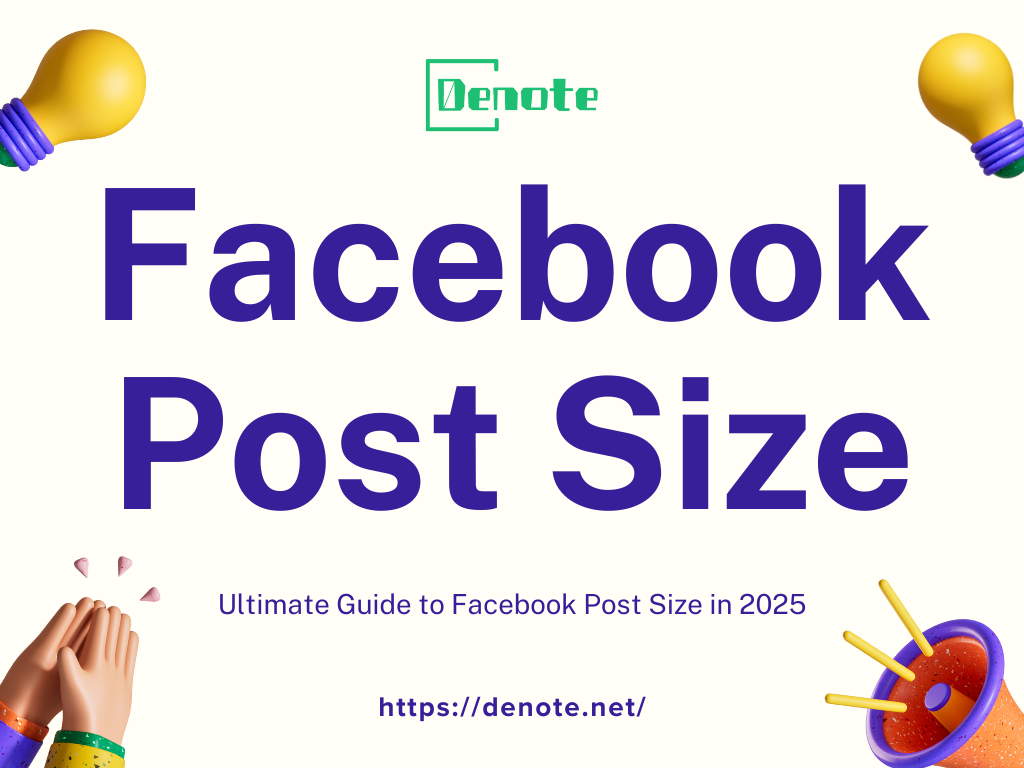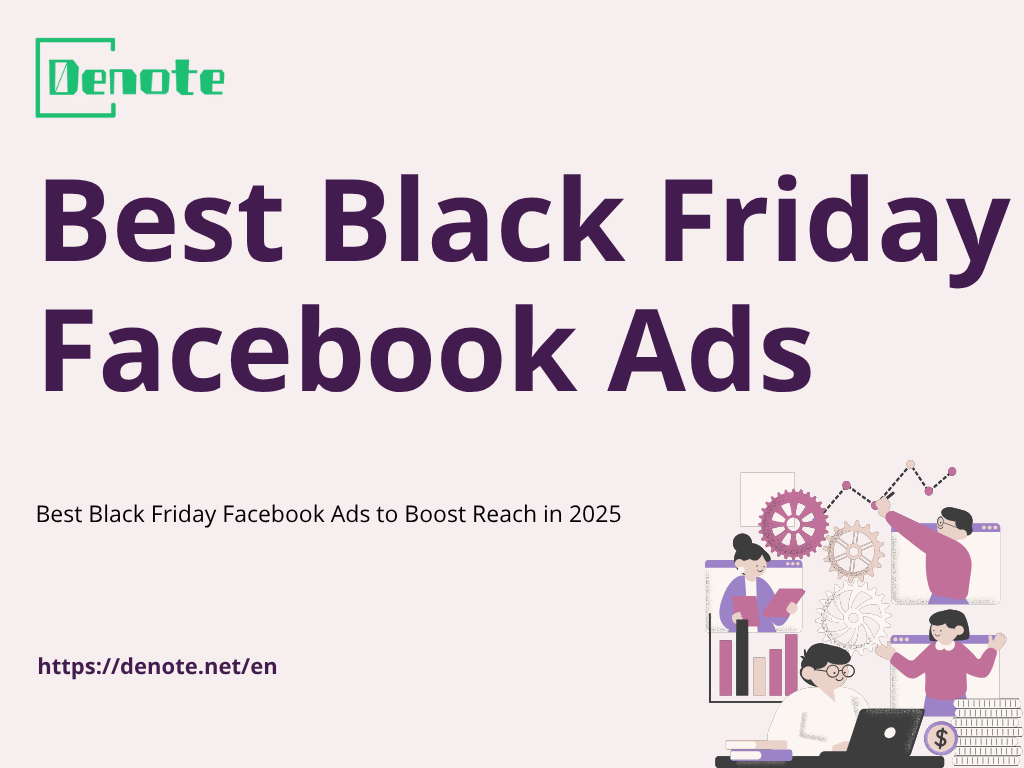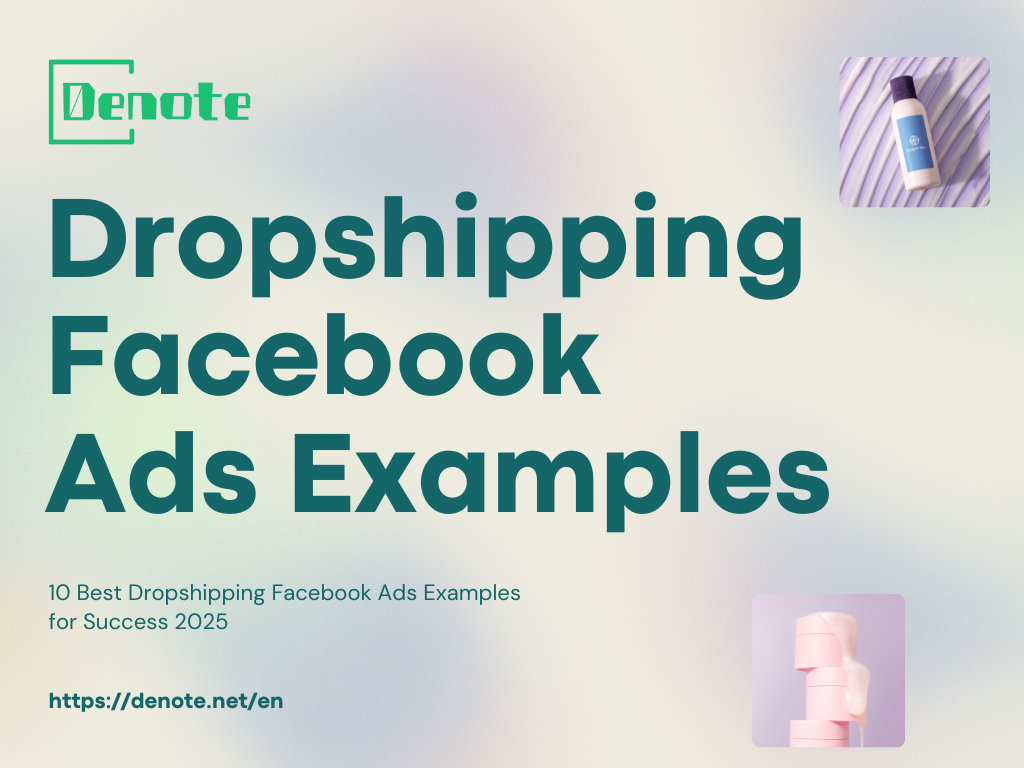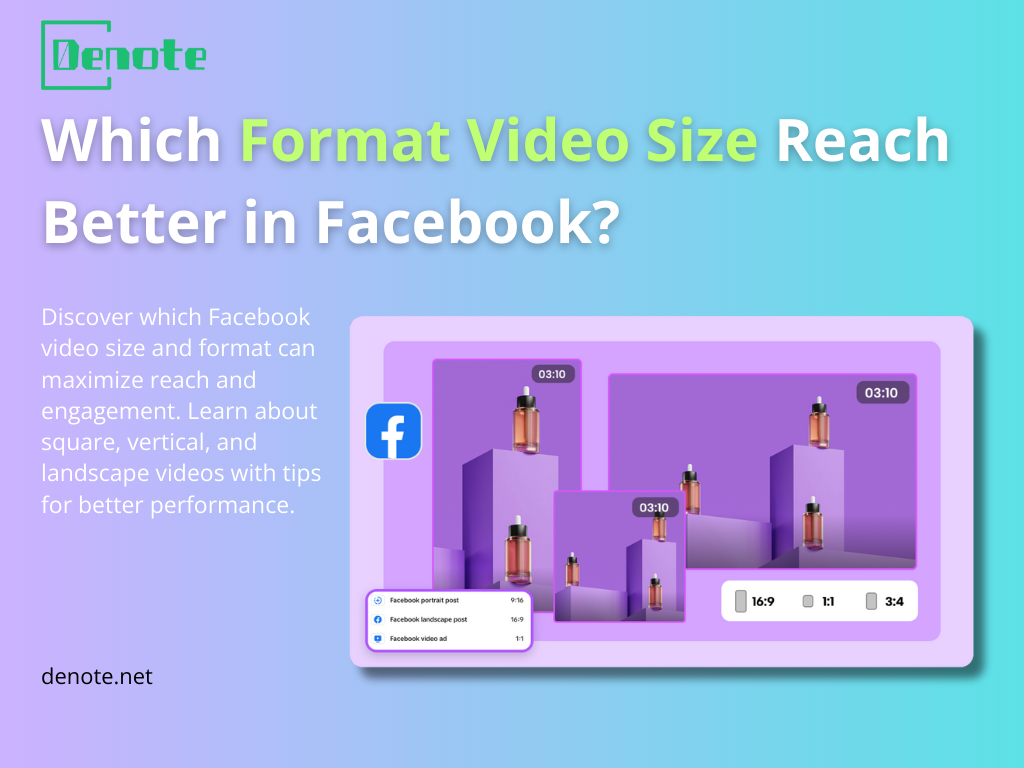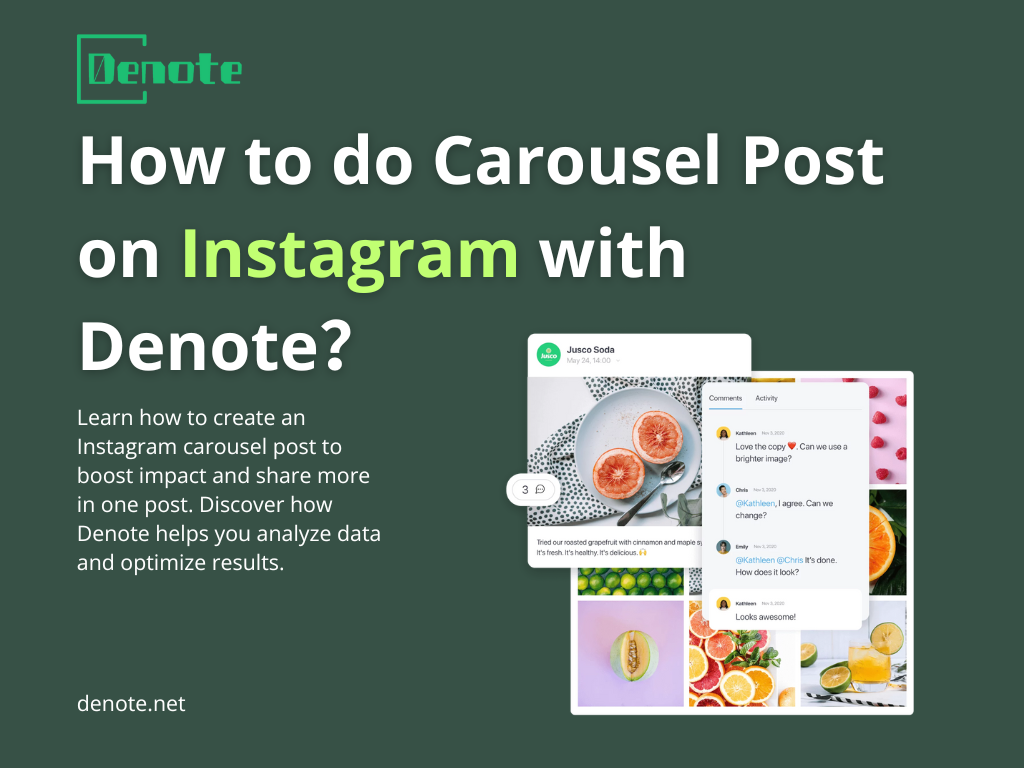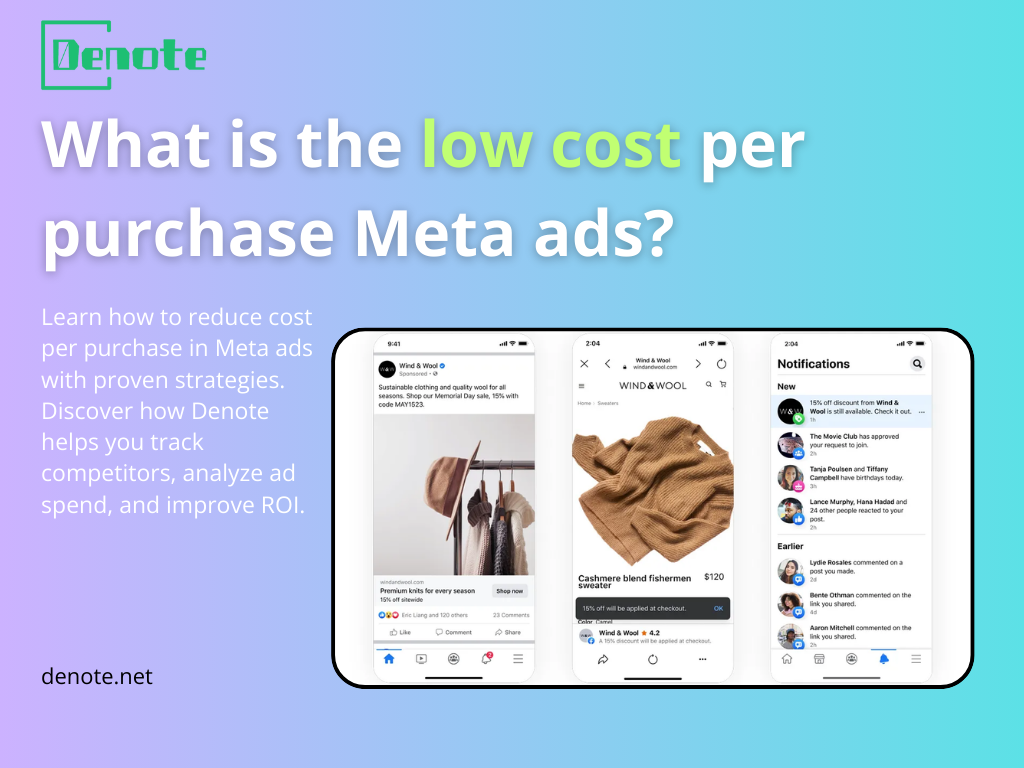7 Best Spy Tools for Shopify Competitor Analysis in 2025
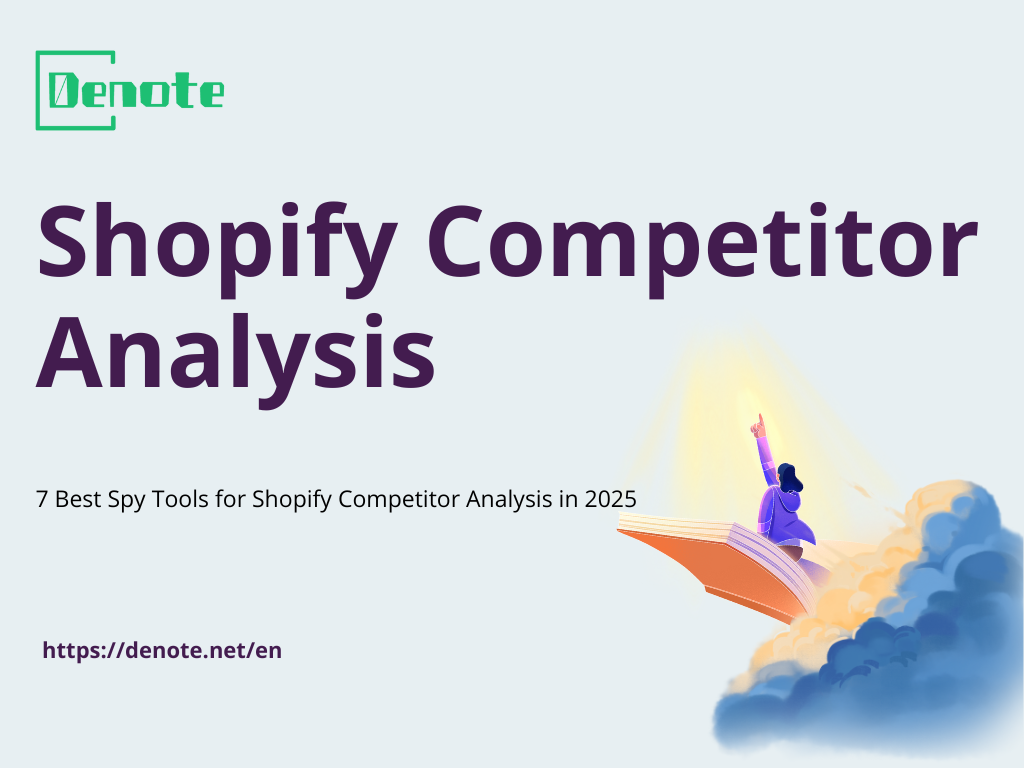
- What Is Shopify Competitor Analysis
- Why Shopify Competitor Analysis Is Crucial for eCommerce Growth
- How Shopify Competitor Analysis Improves Store Performance
- Why You Need Shopify Spy Tools for Shopify Competitor Analysis
-
Top 7 Shopify Spy Tools for Shopify Competitor Analysis in 2025
- Denote – Best for Ad Creative and Campaign Insights
- Koala Inspector – Shopify Store Intelligence Made Simple
- SimilarWeb – Analyze Shopify Store Traffic and Engagement
- SEMrush – SEO-Based Shopify Competitor Analysis
- PiPiAds – Best for Shopify TikTok Ad Research
- Foreplay – Ad Library and Creative Organization
- Commerce Inspector – Track Product Launches and Updates
- Step-by-Step Guide to Conduct Shopify Competitor Analysis
- Key Metrics in Shopify Competitor Analysis
- How Denote Enhances Shopify Competitor Analysis
- Common Mistakes to Avoid in Shopify Competitor Analysis
- Turning Shopify Competitor Analysis Into Action
- Conclusion
What Is Shopify Competitor Analysis
At its heart, shopify competitor analysis is the process of methodically studying other stores built on Shopify (or other e-commerce platforms) to understand how they price their products, design their stores, run ads, communicate with customers, and build brand loyalty.
According to Shopify’s own blog, competitive analysis is “the process of evaluating and understanding the strengths and weaknesses of competitors in your market.” For a Shopify merchant, this means looking beyond your own store—peeking behind the curtain of others to see what’s working and what’s not.
Why go to the trouble? The core purpose of shopify competitor analysis is three-fold:
- Identify what your competitors are doing right, so you can learn from their success.
- Detect weaknesses or gaps in their approach, giving you an opportunity to differentiate and excel.
- Use that intel to sharpen your own strategy, optimize your store, and build a sustainable edge.
Imagine you’re playing a game of chess. You’re focused on your next move—but if you never watch your opponent, you’ll miss the patterns, traps, and blunders. Shopify competitor analysis lets you watch your rivals’ game—and then craft your own winning strategy.
Why Shopify Competitor Analysis Is Crucial for eCommerce Growth
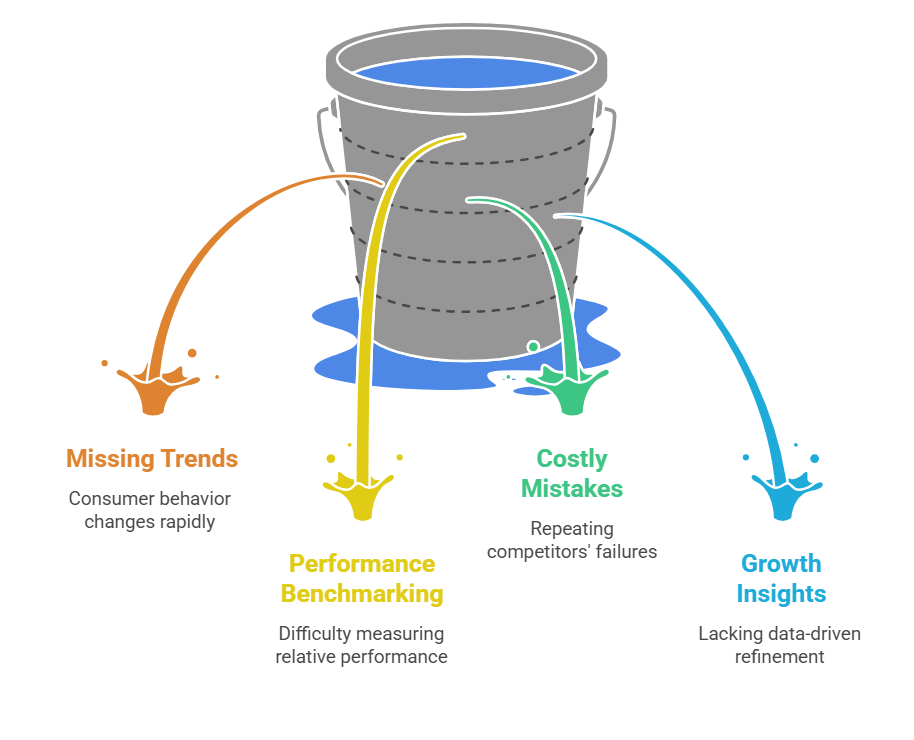
Honestly, running a Shopify store these days? It’s wild out there. Feels less like e-commerce and more like hacking your way through some overgrown jungle—vines everywhere, random holes you could fall into, and yeah, everyone’s fighting for the same patch of sunlight. If you’re just wandering around without a clue about what your rivals are up to, good luck. You’ll probably end up stuck in quicksand or eaten by metaphorical mosquitos. That’s why competitor analysis on Shopify isn’t just helpful—it’s your survival kit. Binoculars, compass, the whole deal.
Here are some of the reasons why such analysis is absolutely crucial:
- Stay ahead of shifting trends: Consumer behaviours change, new marketing channels emerge, and what worked last year may not work now. By regularly conducting shopify competitor analysis, you can spot these shifts early. For instance, one study noted that e-commerce brands can gain “a cutting-edge approach” by ongoing competitive intelligence.
- Benchmark your performance: It’s hard to know how well you’re doing unless you measure relative to someone. When you dive into shopify competitor analysis, you’re asking: “How does my store stack up in traffic, design, ads, user experience, product mix, pricing?”
- Avoid costly mistakes: Some competitors may have already made mistakes you’re about to make. Detecting those via shopify competitor analysis lets you sidestep wasted ad spend or mis-positioned products.
- Fuel growth with actionable insights: Rather than flying blind, you’ll be using data from your rivals to refine your product line, optimize pricing, improve UX, sharpen your ad creatives, and improve conversion rates — all components of growth.
Without this kind of structured shopify competitor analysis, you risk running your store in isolation—assuming you’re unique when you’re really just repeating what everyone else is doing, or worse: doing it worse.
How Shopify Competitor Analysis Improves Store Performance
Okay, so we’ve convinced ourselves that shopify competitor analysis matters. But how exactly does it translate into improved store performance? Let’s unpack that.
- Better product-market fitThrough competitor analysis, you’ll see which products are resonating in your niche. Are competitors promoting a particular model or theme heavily? Did their traffic surge? You can adapt your product mix accordingly. For example, one guide says that analyzing your Shopify competitors helps “surface actionable insights, catching up, and even leading the pack.”
- Sharper pricing strategyWhen you know what competitors charge, what discounts they run, and how frequently, you can calibrate your own pricing intelligently—not just randomly setting numbers and hoping.
- Improved ad creatives and marketing funnelBy observing your competitors’ ad creatives, landing pages, retargeting flows, you get the blueprint of what’s working. Then you apply those lessons, mixed with your own brand voice, to iterate faster.
- Enhanced user experience (UX) & store designCompetitor stores often embody best practices in navigation, mobile optimization, checkout flow, customer support, and upsell mechanics. A strong shopify competitor analysis gives you a shortlist of UX design improvements.
- Reduced risk and faster iterationWith competitor insights, you’re less likely to launch a poorly-positioned product, run ineffective ads, or copy ill-fitting tactics. The result: fewer wasted dollars, faster adjustments, more consistent growth.
In short, by embracing shopify competitor analysis you tap into a treasure trove of insights and accelerate your path to a leaner, more optimized store. Your performance improves not by luck, but by design.
| Improvement | How Shopify Competitor Analysis Helps |
|---|---|
| 1. Better Product-Market Fit | Analyzing competitors’ best-selling products helps you adapt your own product mix to match customer demand. |
| 2. Sharper Pricing Strategy | Observing competitors’ pricing, discounts, and promotions enables you to adjust your own pricing intelligently. |
| 3. Improved Ad Creatives & Funnel | Studying competitors’ ad creatives and landing pages reveals what works, helping you iterate faster. |
| 4. Enhanced User Experience (UX) | Competitor stores showcase best practices for navigation, checkout, and customer support to refine your own UX. |
| 5. Reduced Risk & Faster Iteration | Insights from competitors allow you to avoid mistakes and adjust strategies quickly for consistent growth. |
Why You Need Shopify Spy Tools for Shopify Competitor Analysis
If shopify competitor analysis is your compass, then spy tools are your map, telescope and magnifying glass all in one. They help you cut through the haze, gather actionable data, and scale insights—without digging through spreadsheets all day.
Understand Market Positioning and Product Trends
Alright, so first thing’s first—if you’re diving into analysis, you gotta look around and see what the other Shopify stores are up to. Like, what corner of the market are they trying to own? Who are they actually selling to? Are they chasing some weird TikTok trend or maybe everyone’s suddenly obsessed with sustainable packaging?
Honestly, when you start poking around with those competitor spy tools, you’ll probably spot a few stores ditching plastic and going all-in on that “green” vibe, or maybe they’re getting people hooked on subscriptions. That’s usually a pretty good heads-up that shoppers want something new. And hey, if you’ve got a tool that tracks what products are popping off, or how a store’s focus keeps shifting, that’s gold. Just keep your eyes peeled and jump on those trends before everyone else does.
Reveal Competitor Advertising and Targeting Strategies
Advertising offers a window into what your competitors believe works. What platforms are they using? What creatives? What offers? What ad spend intensity?
By applying shopify competitor analysis with strong ad-intelligence tools, you can uncover actual campaigns: creatives, messaging, targeting, spend levels. This translates into an “inside look” at what competitors are trying to test and scale. Instead of guessing your ad strategy, you borrow and adapt theirs (with your brand twist), and iterate faster.
Discover Winning Shopify Store Designs and Funnels
Store design and funnel strategy can make or break a Shopify store. Often your competitors will already have refined their funnel—the landing page, upsell flow, email sequence, exit intent flow, etc.
With a thorough shopify competitor analysis, you can reverse-engineer their funnel. What theme are they using? How many steps to checkout? What upsell offer pops up? What messaging appears at each stage? A spy tool helps you capture screenshots and notes of these funnels. Then you map them against your own and upgrade your store experience with confidence.
Save Time Through Automated Competitor Research
Manual competitor research is like digging for gold with a spoon. Spy tools hand you a mining rig. With automation, you can monitor dozens (or hundreds) of competitor stores in parallel, receive alerts when they change strategy, pull in ad creatives, track traffic shifts—all saving you vast time and letting you focus on action rather than just data-gathering.
In essence: a smart set of tools transforms your shopify competitor analysis from a one-off project into a continuous, proactive system for growth.
Top 7 Shopify Spy Tools for Shopify Competitor Analysis in 2025
Ready to gear up your toolkit? Here are the top seven spy tools you should consider if you’re serious about shopify competitor analysis in 2025.
Denote – Best for Ad Creative and Campaign Insights
Key Features for Shopify Competitor Analysis
Denote stands out as a powerhouse for tracking Shopify store ads across platforms. It allows you to filter by ad spend, audience, geolocation, creative format and more—letting you zero in on exactly what your competitors are doing and when.
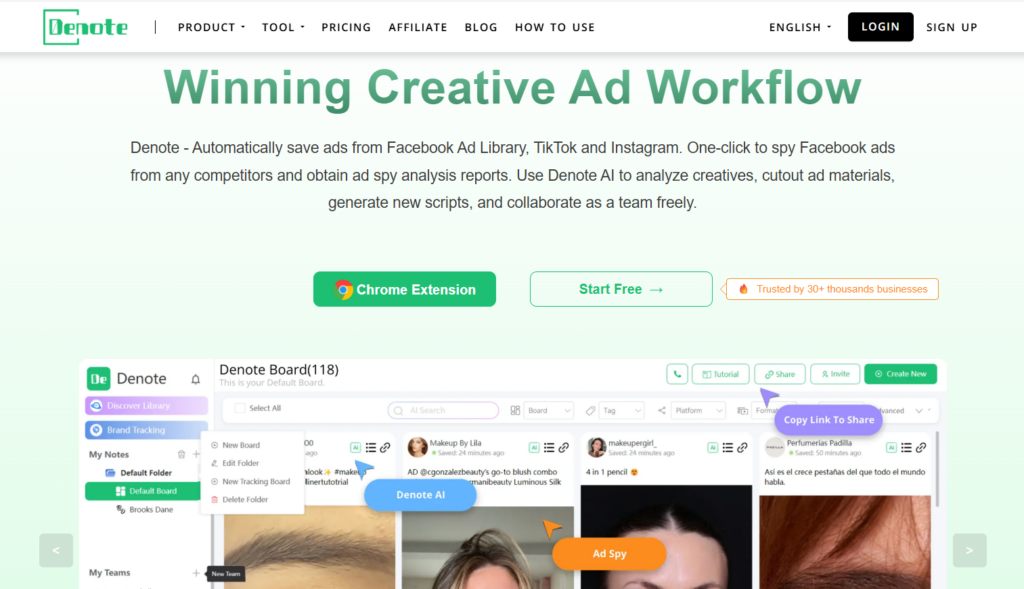
How Denote Helps Marketers Track Shopify Ads
With the Denote platform, you can watch thousands of live campaigns, review top performing ads by category, save creatives for your own brainstorming, and benchmark your ad spend against competitors. For any merchant doing shopify competitor analysis, Denote gives you the actionable “what” and “how” behind rival campaigns.
Why Denote Outperforms Traditional Spy Tools
Unlike generic ad libraries, Denote is built for Shopify-centric use. It integrates e-commerce KPIs, recognizes store-specific patterns, and gives real-time updates on campaign changes. In the game of shopify competitor analysis, this kind of granularity and speed is gold.
Koala Inspector – Shopify Store Intelligence Made Simple
Koala Inspector is a Chrome extension tailored for Shopify. When you browse a competitor’s store, Koala Inspector reveals best-selling items, pricing, theme details, active ad campaigns and more. It’s highly recommended for beginners doing shopify competitor analysis.
SimilarWeb – Analyze Shopify Store Traffic and Engagement
SimilarWeb offers deep insights into website traffic sources, geographies, audience interests and more. Within a shopify competitor analysis framework, it’s perfect for benchmarking your store’s traffic share against rivals and seeing where their audience comes from.
SEMrush – SEO-Based Shopify Competitor Analysis
SEMrush specializes in organic search competitor monitoring. When you’re doing shopify competitor analysis you’ll want to know which keywords your competitors rank for, what their backlinks look like, how they structure content. SEMrush gives that SEO lens.
PiPiAds – Best for Shopify TikTok Ad Research
PiPiAds is a niche tool that tracks TikTok ads for Shopify stores. In the age of short-form video commerce, including influencer-led sales, PiPiAds is powerful when your competitor analysis needs to include social-video channels.
Foreplay – Ad Library and Creative Organization
Foreplay is a tool built for organizing and analyzing large sets of ad creatives. During shopify competitor analysis, especially if you’re monitoring many stores, you’ll appreciate Foreplay’s library, tagging and benchmark features.
Commerce Inspector – Track Product Launches and Updates
Commerce Inspector gives you visibility into a competitor’s product catalogue, launch dates, upsell offerings, theme changes and more. For shopify competitor analysis focused on product strategy and timing, this tool is a must-have.
Step-by-Step Guide to Conduct Shopify Competitor Analysis
Now that you’ve got the mindset and tools, let’s walk through a practical five-step process to conduct your shopify competitor analysis.
Step 1 – Identify Your Shopify Competitors
Begin by creating a list of 5–10 direct and indirect competitors. Direct ones sell similar products to yours on Shopify; indirect ones may not use Shopify but attract the same customers and steal your market share. Use searches like site:myshopify.com “keyword” or tools like Wappalyzer to spotlight Shopify usage. Ensure you include fast-growing newcomers, not just legacy players – sometimes they’re where the most interesting moves happen.
Step 2 – Collect Store and Ad Data Using Spy Tools
With your competitor list in hand, fire up tools like Denote, Koala Inspector and Commerce Inspector. Gather their store URLs, ad creatives, best-selling products, traffic sources, pricing patterns, and UX features. Document everything in a spreadsheet or dashboard. The goal: build a “competitor profile” for each store. In the language of shopify competitor analysis, you’re turning observation into organized insight.
Step 3 – Evaluate Pricing, Product Mix, and Promotions
Look across your competitors’ product catalogues: what are their top SKUs, price points, discount strategies, bundling offers? Are they pushing subscriptions or one-time purchases? What seasonal offers do they run? For shopify competitor analysis, this step reveals how your rivals monetise and how you might adjust your own product-market fit and pricing strategy.
Step 4 – Benchmark Traffic, SEO, and Conversion Funnels
Pull in traffic audits with SimilarWeb and SEO data with SEMrush. Examine ad funnels—what happens after a visitor clicks their ad? Do they land on a promo page, how many steps to checkout, what upsell offers appear? For each competitor, estimate conversion flows, user experience quality and drop-off points. This is where shopify competitor analysis moves from “what they do” to “how well they do it.”
Step 5 – Apply Insights to Strengthen Your Store Strategy
Now translate everything you’ve learned into action. Update your product mix, refine pricing, redesign your store to match or beat best practices, refresh ad creatives, optimise your funnel. Use the lessons from your shopify competitor analysis to craft your next quarter’s strategic roadmap. Don’t just copy—it’s about adapting and improving.
Key Metrics in Shopify Competitor Analysis
Traffic Sources and Conversion Rates
The most obvious indicator of a store’s performance is where its visitors come from and how well those visitors convert. When conducting a shopify competitor analysis, check whether your rivals get traffic mainly from paid ads, organic search, or social media.A store with heavy paid traffic but low engagement may be buying attention instead of earning it, while one with consistent organic growth might have strong brand loyalty. Conversion rates reveal efficiency—if your competitors convert 5 % of visitors while you convert 2 %, the issue may lie in your product presentation or checkout friction.
Ad Spend, Frequency, and CTR
Ad spend tells you how aggressively competitors are scaling; frequency tells you how often they retarget audiences; CTR (click-through rate) shows whether their creatives resonate.By integrating ad data through tools like Denote, you can benchmark these figures across Shopify stores. That insight allows you to adjust your own budget allocation and creative strategy to compete smarter, not louder.
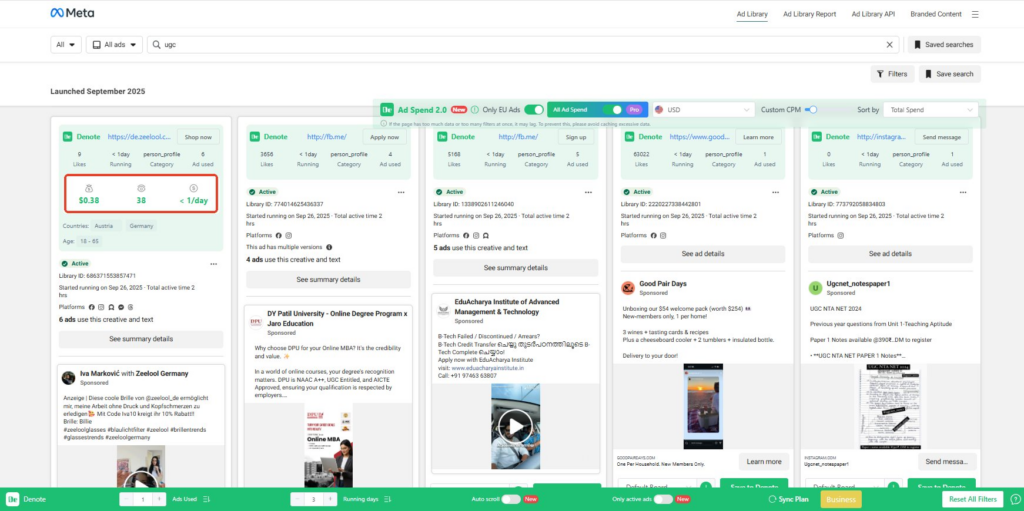
Top Products, Pricing Strategies, and Offers
Every Shopify store has a handful of “hero products” that drive most sales. A thorough shopify competitor analysis uncovers those bestsellers, their average prices, and what kind of promotions fuel them—BOGO deals, limited editions, free-shipping thresholds, etc.Once you see those patterns, ask: how can I position my products differently? Maybe your value lies in premium packaging, faster shipping, or a more ethical sourcing story.
Customer Retention, Reviews, and Ratings
Customer reviews are a goldmine. They expose pain points competitors haven’t solved—slow delivery, fragile packaging, confusing sizing.Include review analysis in your shopify competitor analysis to learn where customers feel underserved. Addressing those gaps in your store builds trust and loyalty faster than any discount.
How Denote Enhances Shopify Competitor Analysis
Monitor Over 10M+ Ads from Shopify Stores
Denote aggregates more than ten million active ads across Facebook, Instagram, TikTok, and other channels. For a marketer doing shopify competitor analysis, this means instant access to real, measurable campaign data—no guesswork, just visibility.
Filter by Ad Spend, Audience Type, and Platform
You can slice data by spend level, region, creative format, or audience persona. Want to see how high-budget stores advertise skincare products in the U.S.? Denote can surface those ads in seconds. This depth of filtering turns raw data into usable intelligence.
Compare Creatives to Identify Winning Strategies
So, poking around Denote’s dashboard, you get this handy side-by-side thing where you can stack up ad captions, visuals, CTAs—all that jazz. It’s actually kind of wild how fast you spot what your Shopify rivals are doing right (or completely butchering). You’ll catch onto stuff like, hey, maybe those plain, stripped-back images are smashing it, while those big, busy lifestyle pics just flop. Or maybe, for whatever reason, posts with a dumb joke work better than the old “only two left!” trick. The clues are all over the place, honestly. Just gotta actually pay attention.
Save, Organize, and Benchmark Ads for Future Campaigns
The platform lets you save ads, tag them by niche, and build your own creative library. Over time, you create a personalized database of inspiration—an evolving playbook for your brand. That’s what makes Denote more than a spy tool; it’s a creativity accelerator rooted in competitor data.
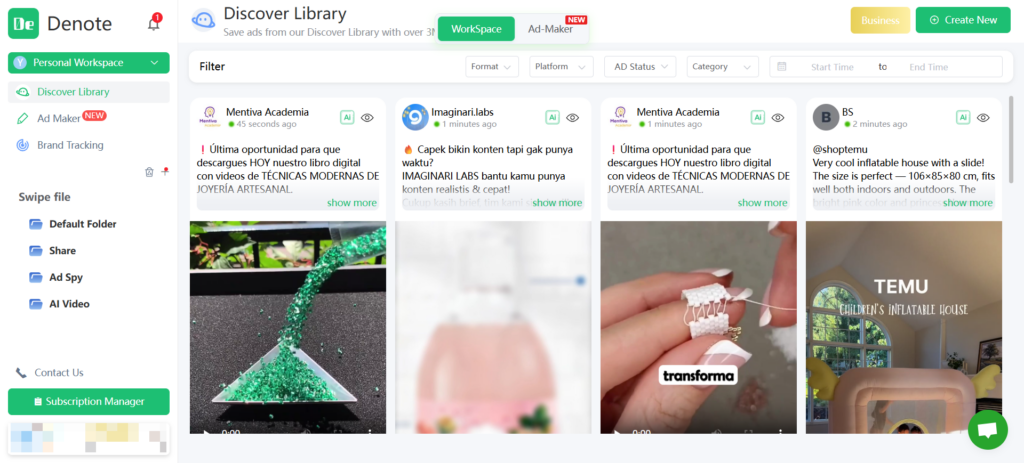
Common Mistakes to Avoid in Shopify Competitor Analysis
Ignoring Smaller but Fast-Growing Shopify Stores
Many merchants fixate on big, established names, but innovation often starts with the underdogs. Ignoring small but fast-growing stores means missing the next big trend before it explodes.
Focusing Only on Ads Without Checking Conversion Funnels
Ads attract clicks, not revenue. Effective shopify competitor analysis digs into what happens after the click—landing pages, upsells, checkout flow, email sequences. Ads show intent; funnels show performance.
Relying on One Source of Data
Depending solely on a single spy tool is like judging a painting through a keyhole. Combine ad intelligence, SEO metrics, and social analytics for a full picture. A holistic approach ensures you don’t misinterpret outliers as trends.
Copying Competitors Instead of Adapting Insights
Copying kills creativity and usually fails because your context is different—budget, audience, brand voice. The goal of shopify competitor analysis is adaptation. Translate insights into your unique story rather than mirroring someone else’s.
Turning Shopify Competitor Analysis Into Action
Improve Your Product Strategy with Data
If analysis shows competitors thriving with eco-friendly or customizable items, consider similar directions. Use data as your compass—each metric a signal pointing toward opportunity.
Enhance Store Design Based on Competitor Insights
Maybe competitors’ stores load faster, feature clearer CTAs, or highlight user-generated content. Borrow those structural wins. A smooth user journey often converts better than any sale banner.
Optimize Shopify Ad Campaigns with Real-Time Feedback
Use spy-tool dashboards to monitor how competitor ads evolve week by week. When a campaign scales rapidly, dissect why: new creative? new audience? Then test a refined version in your own account. Denote and similar platforms provide that feedback loop so you can pivot before trends go cold.
Conclusion
Shopify competitor analysis isn’t a one-time task—it’s an ongoing conversation with the market. The most successful Shopify merchants treat it like a heartbeat: regular, measured, essential for life.By studying others, you sharpen yourself. By using tools like Denote, Koala Inspector, or SimilarWeb, you transform scattered data into a strategy engine that powers growth.Remember: your competitors are not obstacles; they’re teachers in disguise. Learn from them, innovate beyond them, and your store will stand out in 2025’s ever-crowded digital bazaar.
